Exhibitions
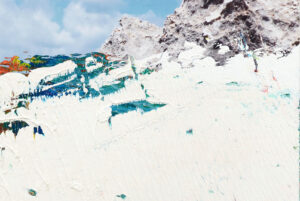
GERHARD RICHTER:
ENGADIN
16 DECEMBER 2023 – 13 APRIL 2024
curated by Dieter Schwarz
NIETZSCHE-HAUS | SEGANTINI MUSEUM | HAUSER & WIRTH ST. MORITZ
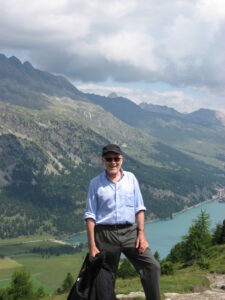
Gerhard Richter in Sils, summer 2006
Gerhard Richter, born in 1932, is one of the most important and celebrated artists of our time. His works can be found in international collections and have been exhibited in numerous museums and galleries in Europe and the United States. Richter first vacationed in the Swiss Alpine village Sils, located in the Upper Engadin region, in 1989 and has regularly visited the location during both summer and winter holidays for over 25 years. Presented across three venues in the Upper Engadin – Nietzsche-Haus in Sils and the Segantini Museum and Hauser & Wirth in St. Moritz – ‘Gerhard Richter: Engadin’ is the first exhibition to explore Richter’s deep connection with the Alpine valley landscape. More than seventy works from museums and private collections – including paintings, overpainted photographs, drawings and objects – are testament to the artist’s fascination with the Upper Engadin valley.
The work connecting the three exhibition venues is a steel sphere that Richter had produced as an edition, on view at each site. He first presented it at Nietzsche-Haus in 1992, in an exhibition curated by Hans Ulrich Obrist. Each unique sphere bears the name of a mountain in the Upper Engadin. The matte, subtly reflective, almost surreal sphere delicately reflects all that surrounds it. It symbolises the sublime yet inhospitable manifestations of nature, which are especially conspicuous in the mountains.
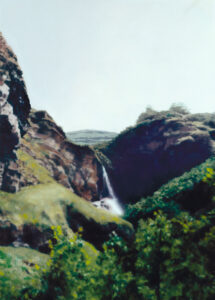
Wasserfall
Gerhard Richter
1997
On view at the Segantini Museum and Hauser & Wirth are paintings that Richter created from photographs taken during his hikes in the Upper Engadin. These works mark a new chapter in his landscape painting – a genre that had always appealed to him for its supposed untimeliness. Richter’s Engadin landscapes are exemplary of the ambiguity in his painting, oscillating between a seductive transfiguration of nature and a reflection of its alienness. Particularly noteworthy is the painting ‘Wasserfall (Waterfall)’ (1997) from Kunst Museum Winterthur, a work that clearly traces Richter’s engagement with 19th-century painting, from romanticism to realism. The artist later overpainted some of the Engadin motifs, including depictions of Piz Materdell and Lake Sils, transforming them into abstract paintings with a melancholic atmosphere that responds to impressions of the landscape.
The photographs Richter brought back from the Upper Engadin not only served as templates for his paintings, but also became canvases for his experiments with oil and lacquer paint. Richter enjoyed accentuating the photographic images with delicate traces of colour, disrupting them with stains and splatters, or using paint and a squeegee to cover them almost entirely. This process allowed him to establish contact between the image and the paint, bringing them closer together or even allowing them to collide. More than fifty of these alluring small-scale works can be seen at the two exhibition venues in St. Moritz. Richter first introduced this new chapter in his oeuvre during the aforementioned exhibition at Nietzsche-Haus, which essentially served as a trial run. Some of the first overpainted photographs appear in the artist’s book ‘Sils’ (1992) that was published on the occasion of the show. The maquette for this publication, designed by Richter himself, is on view at Hauser & Wirth.
Finally, Nietzsche-Haus hosts an exhibition of 39 photographs Richter took in Sils for ‘Dezember (December)’ – a book he collaborated on with the writer and filmmaker Alexander Kluge and published with Suhrkamp in 2010. Richter’s photographs of snow-covered fir trees serve as silent companions to Kluge’s texts, which focus on significant historical events.

12.3.92
Gerhard Richter
1992
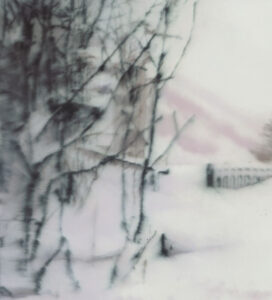
Schnee
Gerhard Richter
1999
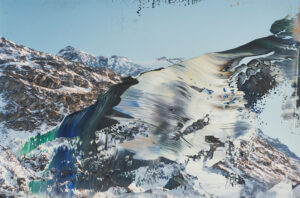
Val Fex, Piz Chapütschin
Gerhard Richter
1992
About the exhibition
Statement from Dr. Mirella Carbone, Artistic Director of the Segantini Museum and Member of the foundation
board of the Nietzsche-Haus: ‘It is a great pleasure for the Segantini Museum and the Nietzsche-Haus to realize an exhibition together for the first time and to collaborate with a prestigious gallery such as Hauser & Wirth. Gerhard Richter first exhibited overpainted photographs at the Nietzsche-Haus 31 years ago. Since then, there has been a wonderful relationship between the artist and the museum, which will be further strengthened by this exhibition. For the Segantini Museum, the forthcoming exhibition is a unique opportunity to bring the work of Richter into the realm of Giovanni Segantini, two world-class artists, both inspired by the Engadin’s nature.’
Iwan Wirth, President, Hauser & Wirth, says: ‘It is an honor to be working with Dieter Schwarz, one of the foremost voices on Gerhard Richter’s work, for this momentous exhibition, alongside two of the most important and longstanding institutions in the Engadin Valley. The Engadin has long been a centre of creativity and holds great significance for generations of artists who, like Richter, have been captivated by its breath-taking natural beauty and longstanding cultural tradition. Through Richter’s truly visionary group of works on view in the exhibition, he shares with us a deep connection to the region as a gallery with Swiss heritage.’
Dr. Dieter Schwarz, former director of Kunst Museum Winterthur, curated exhibitions of Gerhard Richter’s work for the museum in 1999 and in 2014. He is the author of the catalogue raisonné of Richter’s drawings and has written numerous texts on the artist for catalogues and books.
The show is accompanied by a catalogue published by Hauser & Wirth Publishers, with images of the works on display and an essay by Dieter Schwarz. It has been produced in collaboration with the Segantini Museum and Nietzsche-Haus.
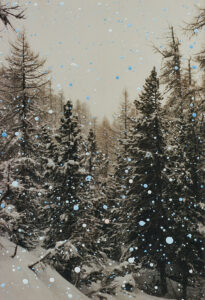
Laret
Gerhard Richter
1992
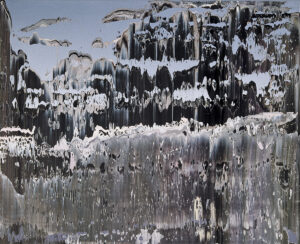
Silsersee
Gerhard Richter
1995
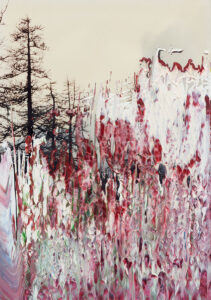
22.9.94
Gerhard Richter
1994
